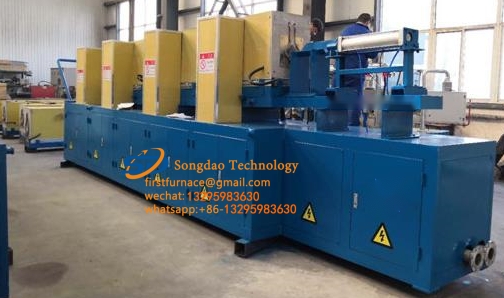- 21
- Apr
Induction furnaces for the forging industry
Induction furnaces for the forging industry
Induction heating furnace is the main force of heating equipment in the forging industry, especially in the die forging industry, and it has become an indispensable first choice for automatic forging heating production lines. Is there any reason why the location of the induction heating furnace in the forging industry is so important?
1. Forging is a method of processing metal mechanical forgings or forging blanks under impact or pressure with the help of tools or dies. In order to reduce the striking force of the forging equipment and improve the performance index of the metal, it is necessary to heat the forging blank, which uses an induction heating furnace.
2. The forging blank heated by the induction heating furnace has good shape and dimensional stability, and has better comprehensive mechanical properties. The obvious advantages of forgings are high toughness, reasonable fiber structure, and small performance changes between parts; the internal quality of forgings is related to the processing history and will not be surpassed by any metal processing technology.
3. The induction heating furnace has good heat penetration performance and uniform temperature, so that after the metal forging blank is plastically deformed, the internal defects of the blank can be eliminated, such as forging (welding) voids, compaction and looseness, broken carbides, non-metallic inclusions and Distribute it along the deformation direction, improve or eliminate component segregation, etc., and obtain uniform and fine low and high magnification structures.
4. The castings obtained by heating metal materials in the intermediate frequency furnace can obtain more accurate dimensions and more complex shapes than forgings, but it is difficult to eliminate defects such as porosity, voids, composition segregation, and non-metallic inclusions; the compression resistance of castings Although the strength is high, the toughness is insufficient, and it is difficult to use it under the condition of large tensile stress. The parts obtained by the machining method have high dimensional accuracy and smooth surface, but the internal flow lines of the metal are often cut off, which is easy to cause stress corrosion, and the ability to bear the alternating stress of tension and compression is poor.
5. Forging blanks heated by induction heating furnaces have a wide range of applications. Almost all the major force-bearing components in motion are formed by forging after heating the forging blank in the induction heating furnace, but the greater driving force for the development of the induction heating furnace technology comes from the vehicle manufacturing industry, the automobile manufacturing industry and later the aircraft manufacturing industry. The size and quality of the forgings are getting bigger and bigger, the shape is getting more complex and fine, the forging materials are getting wider and wider, and the forging is more difficult. This is because the modern heavy industry and transportation industry pursue forging products with long service life and high reliability, so that induction heating furnaces need to improve their own technology in order to keep up with the development trend of the times.

